Sorted by date Results 126 - 150 of 157

Care for chickens correctly and they'll reward you with cartons full of fresh eggs. Get it wrong and the eggs stop coming. The good news is that getting it right isn't difficult, said Jim Hermes, a poultry specialist for Oregon State University Extension Service. Give them appropriate feed, water and shelter from the worst weather of winter and you've covered the bases. Make bagged feed from feed stores the food of choice. It's formulated for each stage of life – baby, adolescent and adults ...

Reality can get skewed when there are so many sources of information – books, magazines, newspapers, nurseries and, most of all, the internet and social media open up lots of room for contradiction. So, how do you find the right answer for gardening questions? Nine experts from Oregon State University Extension Service stepped up to bust some common gardening myths. Read on to get some research-based answers to 10 common misconceptions. For additional questions, call the OSU Extension master g...

For a hedge, arborvitae has a place. It's tall, skinny, evergreen, low maintenance, and cheap. "Some people look down on arborvitae, but it fits in places that other things can't," said Neil Bell, a retired horticulturist for Oregon State University Extension Service. "And it's about as low maintenance a plant as anything you can buy if it's sited correctly." When finding a location for arborvitae in the garden, Bell recommends full sun and well-drained soil. "They can take some afternoon...
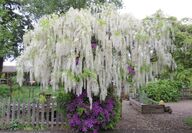
Wisteria delivers a beautiful spring display, but this vigorous vine needs plenty of pruning to keep it from swallowing the garden. "Wisteria are very vigorous vines and can climb easily to 30 to 40 feet," said Neil Bell, a horticulturist with Oregon State University Extension Service. "They can be quite heavy and should be grown on a strong structure." When people see the jaw-dropping blooms erupt in mid-spring, they covet wisteria for their own garden. But, they should first know that in...
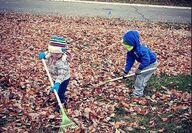
The rains may have started, but there's still plenty that needs attention in the garden – if you're up for it. Layer up and dodge the raindrops and you've got plenty of time to plant, transplant, evaluate and plan for next year. Gardeners tend to think of fall as the time to put bulbs in the ground, but the warm soil and increasing moisture make it a great time to plant most anything, according to Brooke Edmunds, an Oregon State University Extension Service horticulturist. Transplanting can a...

With last year's storms, particularly the substantial ice event, there's plenty of firewood around. Many homeowners wonder what to do with all the ashes left behind after the flames in the fireplace die down. As you clean the fireplace, do your plants a favor and sprinkle the ashes in the garden instead of throwing them in the garbage. Because wood ash is derived from plant material, it contains most of the 13 essential nutrients the soil supplies for plant growth, according to Oregon State...
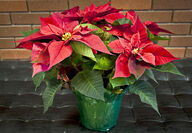
Holding onto poinsettias after the holidays is good for the pocketbook but hard on the ego when you can't get them to color up the next year. Experts at Oregon State University Extension Service say now's the time to start coaxing poinsettias back into color and bloom for December. Sensitive to day length, the poinsettia needs a certain minimum amount of darkness each 24-hour period to stimulate blooming in the winter. With the shorter fall and winter days in Oregon, the plant has a natural...
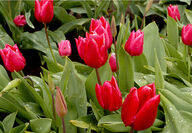
In fall, gardeners settle bulbs under a blanket of soil and wait for spring to watch them flaunt their beauty. "It's easy to create a stunning display that bursts into bloom in the spring or early summer," said Heather Stoven, an Oregon State University Extension horticulturist. "But bulbs don't have to be in the ground to be effective. A pot works just as well." In fact, bulbs often do better in pots than in the ground because pots provide better drainage, critical for their long-term...
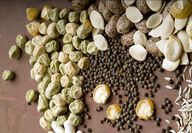
Seize some seeds from the garden for planting next year As the gardening season winds down and you pick the season's last vegetables let some plants go to seed and harvest them for planting next year. "Saving seed can be really fun and is a great way to learn about plants," said Weston Miller, a horticulturist with Oregon State University Extension Service. "If you choose the right types of vegetables, you can keep them going year after year without buying them again." The key to saving seed is...

Fall is a time to enjoy the harvest of summer, but don't hang up your trowel and pull off your gloves just yet – September through November is the best time to plant garlic. Garlic roots develop in the fall and winter, and by early spring they can support the rapid leaf growth that is necessary to form large bulbs, said Chip Bubl, a horticulturist with Oregon State University's Extension Service. What type of garlic should you plant? Some gardeners like to grow top-setting garlic, also called h...
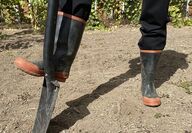
Come spring, excited gardeners drive to nurseries, load up their cars and go home to plant. That's tradition. But fall planting also ranks high as a time to put plants in the ground. Nurseries may not be as jam-packed with plants in fall, but as more people push to plant in autumn, garden stores are bringing in more stock at the end of summer. "For trees, shrubs and perennials fall is a great time to plant," said Weston Miller, Oregon State University Extension Service horticulturist. "If you...
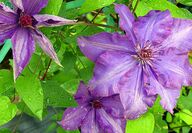
As they climb up trellises and trees unfurling large, lusciously colored flowers, clematis put on a special show in the garden. These garden favorites need a little special handling at the start but once established clematis (clem-ah-tis or cla-mat-is) grow and flower year after year. Clematis vines have three main requirements to thrive – sunlight on their stems and leaves; cool and moist but not wet roots; and support for climbing, according to Oregon State University Extension Service e...
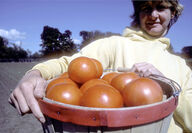
As more people pick up a hoe to grow their own produce, food safety becomes a concern. "Most people can't believe that their own habits could possibly be the source of problems and are not aware what habits can cause risk," said Jeanne Brandt, a family and community health expert with Oregon State University Extension Service. "We only hear about widespread breakouts of food poisoning from commercial distribution. But what we do in the garden and kitchen can be problematic." Brandt is not out...
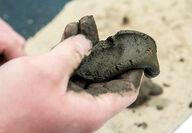
ant to grow better plants, you first need to understand the soil. "The texture of a soil is its proportion of sand, silt and clay," said James Cassidy, a soils instructor at Oregon State University. "Texture determines all kinds of things like drainage, aeration, the amount of water the soil can hold, erosion potential and even the amount of nutrients that can be stored." To become better acquainted with your soil texture, he recommends using the "hand method." Dig beneath the top layer of...

No one wants to think of harvest's end as the vegetable garden reaches peak, but now's the time to plan for cover crops to be planted in fall. Cover crops, also called green manure, include grains like winter oats and cereal rye. Legumes, such as commonly used crimson clover, Austrian field pea and common vetch, are nitrogen "fixers." Beneficial bacteria in legume root nodules take nitrogen from the air and supply it to the plant. When the cover crop decomposes, some of the nitrogen becomes...
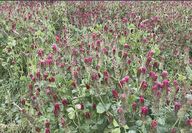
rvest's end as the vegetable garden reaches peak, but now's the time to plan for cover crops to be planted in fall. Cover crops, also called green manure, include grains like winter oats and cereal rye. Legumes, such as commonly used crimson clover, Austrian field pea and common vetch, are nitrogen "fixers." Beneficial bacteria in legume root nodules take nitrogen from the air and supply it to the plant. When the cover crop decomposes, some of the nitrogen becomes available to other plants. If...

Thanks to zealous breeding and new hybridizing techniques, begonias are booming right along with the renaissance of houseplants. Nicole Sanchez, horticulturist for Oregon State University Extension Service, knows first-hand how rewarding begonias can be for both beginners and experts. She became a convert as a teenager when she worked at a garden center. Now, her five plants reside in an east window and thrive with little input. Watering properly – not too much – and light fertilizer are all...

Often not considered, soil pH has as much effect on plant health as disease, insects, drought and drainage. Keeping pH in the right range for certain plants is essential, according to Weston Miller, Oregon State University Extension Service horticulturist. Plants with specific pH requirements include vegetables, blueberries and rhododendrons. Soil pH is a measurement of acidity or alkalinity and measured on a scale from 0 to 14, with 7 being neutral. Lower numbers equal a more acidic or sour...

e distraught by the damage suffered by their plants during the recent heat wave. Questions have come pouring into Oregon State University Extension Service and experts weigh in on what to do now. There's no denying the damage is severe, said Heather Stoven, OSU Extension horticulturist. Some plants died and others were fried by the record-breaking temperatures. Even some that look extremely bad, like rhododendrons and hydrangeas, can bounce back. Burned leaves don't necessarily equal a dead...

e distraught by the damage suffered by their plants during the recent heat wave. Questions have come pouring into Oregon State University Extension Service and experts weigh in on what to do now. There's no denying the damage is severe, said Heather Stoven, OSU Extension horticulturist. Some plants died and others were fried by the record-breaking temperatures. Even some that look extremely bad, like rhododendrons and hydrangeas, can bounce back. Burned leaves don't necessarily equal a dead...

est that arrived in the United States in the 1920s as fishing bait and as hitchhikers on imported plants and soils, have vaulted into gardens and nurseries up and down the Willamette Valley corridor. Unlike beneficial earthworms and nightcrawlers that burrow deep tunnels in the soil, aerating and releasing nutrients as they go, jumping worms stay in the debris on top and eat two to three times the amount of leaf litter as the other worms, according to Sam Chan, Oregon State University Sea Grant...
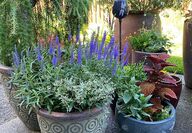
People and plants need care to make it through heatwaves without wilting. Erica Chernoh, Oregon State University Extension Service horticulturist, offers some ideas to help keep yourself and your garden as comfortable as possible. Keep hydrated. Carry a water bottle – and use it! You need water as much as your plants do. If you plan to work in the garden, do it in the morning before the hottest part of the day. Wear a hat and lather on the sunscreen when outside. Water in the morning to give pla...

Knowing the whys and hows of tomato diseases gives gardeners a leg up for successfully growing the most-treasured of vegetables. Brooke Edmunds, a horticulturist with Oregon State University Extension Service, troubleshoots the following common problems that might afflict your tomatoes as the season goes on. Blossom drop – It's usually caused by dry soil and dry winds, but also may be caused by a sudden cold spell, heavy rain, or too much nitrogen. Usually, not all blossoms will fall off, and a...

Growing melons takes some effort in western Oregon, but with the right methods it can end in sweet success. With a warmer, drier climate, eastern Oregon is well set up for cultivating melons. Western Oregon isn't as hospitable, but you can accomplish a crop by choosing the right variety and following tips from Heidi Noordijk, metro small farms outreach coordinator for Oregon State University Extension Service. "Be discerning when you choose a variety," Noordijk said. "Select ones that will...
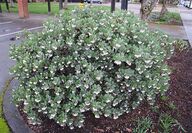
In a world of increasing climate change and the invasion of more exotic insects and pests, sustainable gardening is more important than ever. We can all do our part to help by changing our practices – often just by a bit, depending on the methods you've already put in place. And if it all seems too overwhelming, take it one step at a time. You'll help the environment and at the same time save money and join a community of like-minded gardeners who love to share their experiences. To get you star...